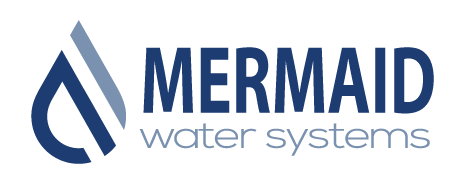A Deep Dive into Pump Service and Maintenance
 In today’s industrial landscape, maximizing efficiency and reliability is crucial. And when it comes to pump service and maintenance, there’s no room for error. A properly functioning pump system is the backbone of many operations, from manufacturing to wastewater management. But how do you ensure optimal performance and avoid costly downtime?
In today’s industrial landscape, maximizing efficiency and reliability is crucial. And when it comes to pump service and maintenance, there’s no room for error. A properly functioning pump system is the backbone of many operations, from manufacturing to wastewater management. But how do you ensure optimal performance and avoid costly downtime?
In this deep dive into pump service and maintenance, we’ll explore the key strategies and best practices that can help you achieve efficiency and reliability. From regular inspections and preventive maintenance to troubleshooting and repairs, we’ll cover it all. We’ll also shed light on the latest advancements in pump technology and how they can enhance performance.
Whether you’re managing a small-scale operation or a large-scale facility, this article will serve as your comprehensive guide. So, join us as we unlock the secrets to maximizing efficiency and reliability in pump service and maintenance. Get ready to optimize your pumping system and experience the benefits of improved productivity, reduced costs, and uninterrupted operations.
The importance of pump service and maintenance
Pumps play a vital role in many industries, including oil and gas, water treatment, and manufacturing. They are responsible for moving fluids, such as water, chemicals, and oil, from one location to another. Without pumps, many industrial processes would come to a halt. That’s why pump service and maintenance are so important.
Regular pump service and maintenance can help prevent breakdowns and reduce the risk of costly downtime. It can also improve the efficiency and reliability of the pump system. Neglecting pump maintenance can lead to reduced performance, increased energy consumption, and premature failure.
Common pump problems and their causes
Pumps can experience a range of problems, from leaks and vibrations to cavitation and overheating. These problems can have various causes, including incorrect installation, wear and tear, and operating outside of design parameters.
One of the most common pump problems is cavitation. Cavitation occurs when the pressure in the pump drops below the vapor pressure of the fluid, causing bubbles to form. When these bubbles collapse, they can damage the pump impeller and other components, leading to reduced performance and eventual failure.
Another common problem is seal failure. Seals are designed to prevent fluid from leaking out of the pump. However, if the seal is not installed correctly or if it becomes worn, it can fail, leading to leaks and reduced performance.
Regular maintenance tasks for pumps
Regular maintenance is essential for keeping pumps in optimal condition. Some of the key maintenance tasks include:
- Lubrication: Pumps have moving parts that require lubrication to prevent wear and tear. Regular lubrication can help extend the life of the pump.
- Inspection: Regular inspections can help identify potential problems before they become major issues. Inspections can include checking for leaks, vibrations, and abnormal noises.
- Cleaning: Pumps can become clogged with dirt, debris, and other contaminants. Regular cleaning can help prevent clogs and improve pump performance.
- Alignment: Pumps should be aligned correctly to prevent vibration and reduce wear and tear. Regular alignment checks can help ensure optimal performance.
Pump troubleshooting techniques
Even with regular maintenance, pumps can still experience problems. Troubleshooting is the process of identifying and resolving these problems. Some common troubleshooting techniques include:
- Checking for leaks: Leaks can indicate a problem with the pump seal or another component. Identifying and fixing leaks can help prevent further damage.
- Checking for vibrations: Vibrations can indicate misalignment or wear and tear. Adjusting the alignment or replacing worn components can help reduce vibrations.
- Checking for overheating: Overheating can indicate a problem with the pump motor or other components. Identifying and fixing the cause of overheating can help prevent further damage.
Best practices for pump service and maintenance
To maximize efficiency and reliability, there are some best practices that you should follow when it comes to pump service and maintenance. These include:
- Regular inspections: Regular inspections can help identify potential problems before they become major issues.
- Preventive maintenance: Preventive maintenance involves performing regular maintenance tasks to prevent breakdowns and reduce the risk of costly downtime.
- Training: Ensuring that your staff is trained in pump service and maintenance can help prevent mistakes and improve efficiency.
- Upgrading technology: Upgrading to newer pump technology can help improve efficiency and reliability.
Pump service and maintenance checklist
To help ensure that you are following best practices, consider using a pump service and maintenance checklist. This checklist should include tasks such as:
- Checking for leaks and vibrations
- Lubricating moving parts
- Cleaning pumps and filters
- Checking alignment
By using a checklist, you can ensure that all necessary tasks are completed and that your pump system is in optimal condition.
Hiring professional pump service providers
While regular pump service and maintenance are essential, there may be times when you need to hire a professional pump service provider. These providers have the expertise and equipment to perform more complex maintenance and repair tasks.
When hiring a pump service provider, be sure to choose one with experience and a good reputation. Ask for references and check online reviews to ensure that you are working with a reputable provider.
Pump service and maintenance costs
The cost of pump service and maintenance can vary depending on the size and complexity of your pump system. Regular maintenance tasks such as cleaning and lubrication are relatively inexpensive. However, more complex tasks such as replacing components can be more costly.
While pump service and maintenance may seem like an added expense, it can actually save you money in the long run. By preventing breakdowns and reducing downtime, you can avoid costly repairs and lost productivity.
Conclusion: The key to maximizing pump efficiency and reliability
In conclusion, pump service and maintenance are essential for maximizing efficiency and reliability. Regular maintenance tasks such as lubrication, inspection, and cleaning can help prevent breakdowns and reduce the risk of costly downtime. Troubleshooting techniques can help identify and resolve problems when they do occur.
By following best practices and using a pump service and maintenance checklist, you can ensure that your pump system is in optimal condition. And if you need to hire a professional pump service provider, be sure to choose one with experience and a good reputation.
Remember, neglecting pump service and maintenance can lead to reduced performance, increased energy consumption, and premature failure. So, invest in your pump system today and experience the benefits of improved productivity, reduced costs, and uninterrupted operations.
